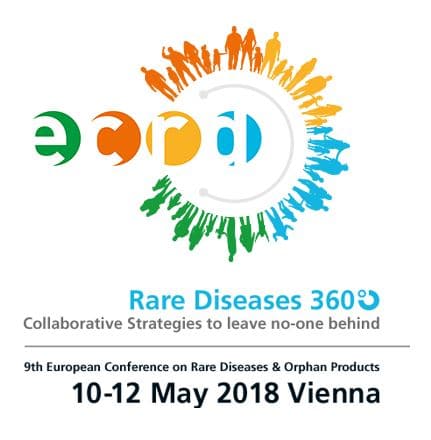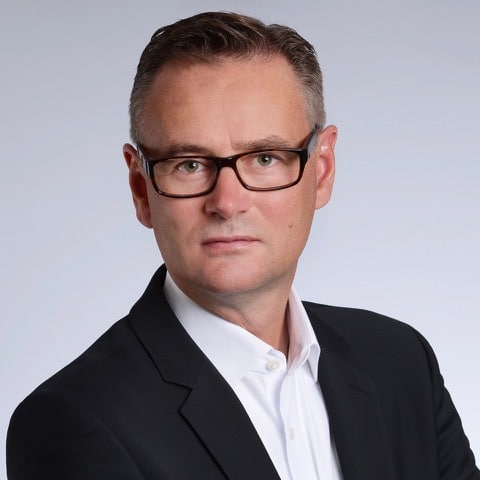
Recently (10-12 May), we traveled to Vienna to attend the 9th European Conference on Rare Diseases and Orphan Products (ECRD). In this article, we describe some of the key takeaways from the conference, and the major implications for biopharmaceutical companies operating in this space.
Our Focus on Rare Diseases
More than 7,000 diseases are classified as rare, and they affect more than 8% of the total population. In Europe alone, 30 million people may be affected. So, while individual rare diseases (RDs) are rare, as a group they are not. In fact, they impact more people than HIV and all cancers combined!
Most—about 80%―are genetic, and the majority affect children. RDs are typically degenerative and often fatal. Only about 5% have approved treatments. As one can imagine, RDs represent quite a burden, and the unmet need is high.
Because of this huge unmet need, Blue Matter has devoted significant resources to building specialized capabilities in RDs. Our goal is to help as many biopharmaceutical companies as possible get new therapies to the patients that urgently need them.
What is ECRD?
The ECRD is organized by EURORDIS. EURORDIS is a key European non-governmental alliance of patient organizations whose mission is “to improve the quality of life of people living with rare diseases in Europe through advocacy at the European level, support for research and medicines development, facilitating networking amongst patient groups, raising awareness, and many other actions designed to reduce the impact of rare diseases on the lives of patients and family.”
EURORDIS represents about 804 rare disease patient organizations in 69 countries. They are the “voice” of 30 million people affected by rare diseases throughout Europe.
This year, the ECRD was held in Vienna, drawing about 900 attendees. The meeting’s overarching theme was “Rare Diseases 360°―Collaborative Strategies to Leave No One Behind.” The congress program was further organized into six sub-themes:
- Structuring the Research & Diagnosis Landscape
- Breakthrough Medicines on the Horizon
- The Digital Patient
- Quality of Life
- Economical Perspectives in Rare Diseases
- Global Rare Equity: Are We There Yet?
Key Takeaways
Below are the top-line takeaways from this year’s ECRD:
- There has been significant policy progress – Increased collaboration and policy focus are helping improve the situation regarding rare diseases. The successful and very recent creation of 24 thriving European Reference Networks (ERNs, organized in specific disease areas) with more than 900 healthcare units is greatly enhancing collaboration. The EU Commission has also increased funding in RDs. Related to this, there has been significant diagnostic progress, as approximately 50% of all RDs can now be diagnosed. One outward sign of the increased attention on RDs: Attendance at ECRD has increased four-fold over the past five years.
- Treatment options are expanding quickly – In the EU, there are more than 150 approved drugs with orphan designation. Currently, more than 7,000 novel treatment options are in various stages of developmentaccording to Pharmaprojects and Informa’s Bird’s Eye View of the Rare Disease Landscape, 2017). Emerging genetic therapies, for example, are showing great promise.
- There are still significant challenges – While things are getting better, there is still much work to be done. Even though 150 orphan drugs have marketing authorization in the EU, there are still 7,000 RDs. Most RDs do not have adequate treatment options. Beyond treatment options, just getting a diagnosis in the first place remains a challenge. Despite improvements, many patients still go years with no diagnosis (or the wrong diagnosis). About half of all RD patients remain undiagnosed. Research funding is still a challenge, as patient organizations (POs) and researchers face a daunting task securing funding for “their” specific diseases. From an access and reimbursement standpoint, health systems will struggle to sustain reimbursement as the set of available treatments continues to expand.
Now, we go one level deeper and explore some of the key takeaways in the meeting “themes” that are most closely related to the work Blue Matter does with client companies.
ECRD Theme 1: Structuring the Research & Diagnosis Landscape
The main points we identified are:
- Diagnostics technology is getting much better – We have come a long way in the last 10 years, moving from microarrays to whole exome sequencing. Now, up to 50% of rare diseases can be diagnosed using whole exome sequencing.
- Non-traditional research approaches are valuable – Given the fragmented nature of rare disease, non-traditional research models—such as patient organization-driven research and innovative funding partnerships—are supplementing industry development.
- Challenges remain ─ Existing research and diagnosis of genetic diseases have been heavily biased towards mutations in gene coding regions, but this is only about 1% of a patient’s entire genome. In addition, despite improvements, there is still lack of diagnosis and defined pathways within and across markets. Many parents are still being told that “you’ll never find another family with the same condition as yours.” Even with an accurate diagnosis, most rare diseases don’t have treatments, so families are often left “in the dark” when trying to determine what to do next. Overall, the number and nature of RDs leads to fragmentation in terms of patients, funding, and research. There is a significant need to better organize across geographies.
- The future is promising, particularly with regards to genomic therapies – Several trends bode well for those engaged in fighting rare diseases:
- We are now moving to whole genome sequencing, which will drive very high diagnostic yield and will continue to improve diagnostic rates.
- There will continue to be improving policy, infrastructure, information sharing, and collaboration as ERNs mature, rare disease pathways are better defined, and cross-border policy is put in place.
- There is also an increasing industry focus as the industry sees rare disease as an attractive market.
- Genomic therapies hold significant promise, as they are essentially “cures.” They will play a big role in shaping the future of treatment.
ECRD Theme 3: The Digital Patient
Data is the “new gold.” It is incredibly valuable in furthering our understanding of rare diseases, expediting diagnosis, and delivering the right treatments. Use and cross-border exchange of digital data is critical. However, exchange of health data across member countries is not always possible or straightforward. The key takeaways are:
- More data is needed for precision medicine – Simply put, stakeholders must find better ways to capture and use data while protecting patient privacy. The General Data Protection Regulation (GDPR) and ERNs represent opportunities to facilitate this.
- Data donation is a new way to share data, and we need to encourage it – Currently, there is severe underutilization of patient-derived and patient-provided data. Data are typically collected and kept in silos. Adoption of emerging technologies that enable optimal use of this data is lagging. In addition, patients don’t always have time to fill in long questionnaires for patient registries, and many questions are often seen as irrelevant. But, incentives may encourage more voluntary sharing.
- Innovations are happening – Despite challenges, innovations are happening. The Duchenne data platform in the Netherlands, for example, is a voluntary database where patients can provide data. They are the owners of the data and can delete it whenever they want. Data can then be shared with healthcare providers across geographies. Other examples of digital transformation include Orphanet, ERNs, the French/Portuguese national database for RDs, European Patient Advocacy Groups (ePAGs), and even artificial intelligence to aid in RD diagnosis (such as the Health29 platform). Finally, digital technology can play an important role in capturing the patient experience outside the hospital visit, where most of the experience happens. For example, the company Aparito produces wearable devices to monitor and capture patient experiences in the real world.
ECRD Theme 5: Economical Perspectives in Rare Diseases
With more than 7,000 novel treatment options currently in development maintaining or even improving early and broad access to RD therapies while ensuring a sustainable RD business model will remain challenging. Below are some of the key takeaways in this area:
- Current trends in market access mirror those in more common diseases, but are magnified in RDs – There is an Increasing need to document the economic, societal, and patient burden of rare diseases, and to quantify costs more holistically. Payers, regulators, and pharmaceutical companies are looking at economic value earlier than ever. Therefore, pharmaceutical companies must collaborate with payers earlier in the development process. In addition, the need for post-launch evidence generation (PLEG) is critical and will continue to increase, especially as the market becomes more competitive.
- Determining the cost—and value—of RD treatments is difficult, but critically important – There is an increasing consensus that traditional cost effectiveness / utility models are not well suited to capture the value of RD therapies, and that the chronic disease burden is not appropriately assessed. For example, recent burden of illness studies (e.g. CHESS hemophilia; Huntington’s Burden Study) have highlighted the challenges and need to capture the rare disease burden more comprehensively. Additionally, a number of studies have shown that the care burden can be very high in RDs and quite different across countries. Nevertheless, thorough quantification as part of the economic evaluation is essential.
- Incentives remain instrumental ─ Incentives are critical to encourage industry partners to develop novel therapies, as evidenced by the increasing number of rare disease market authorizations. While some have questioned the effectiveness of these incentives, the current results suggest a compelling and direct positive impact. Maintaining these frameworks is generally seen as one of the keys to sustaining innovation.
- The RD market is concentrated – There seems to be concentration of drug development efforts within a few rare diseases (e.g. Duchenne Muscular Dystrophy, Spinal Muscular Atrophy, etc.). While competition and incentives will drive innovation and improve patient care, other disease areas might be underserved, and will need more attention.
- Cost concerns may threaten investment – Uncertainties around affordability, drug pricing, and future reimbursement represent significant risks in the access environment. This could pose a threat to long-term investment in rare diseases.
- More innovation (by policy-makers, payers, pharmaceutical companies, and others) will be required – For example, consider the following:
- Novel collaborative approaches are critical. Payers need to be engaged early and budget planning horizons must be longer-term.
- Novel economic models are needed to capture value of RD drugs more holistically. Societal preferences and willingness to pay for rare diseases should be reflected in future policies and health care coverage.
- The newly established European Reference Networks (ERNs) will play an important role for evidence generation, documenting the value of rare disease therapies, and for sharing (pharmaco-)economic information.
- Future breakthrough medicines such as “one-and-done” gene therapies will require novel pricing models.
Conclusion
It’s impossible to analyze and relay all the findings from a meeting like the ECRD in a relatively short blog article. However, we can outline some parting thoughts for pharmaceutical and biotech companies. Here are five that jumped out at us this past week:
- Leverage the significant resources available through EURORDIS and other organizations to better understand the RD ecosystem and effectively engage with patients. They are quite useful to any company working to succeed in RDs.
- Collaborate with patient organizations, regulators, payers, researchers, and others from the beginning. They can help tackle some of the big problems facing companies, such as access to patient registries, finding and developing KOLs, and having good clinical models.
- Emerging ERNs are a major opportunity for industry partners to engage with experts and patients. Currently, industry is excluded but future opportunities will likely come about.
- Be active and open-minded; Use “black swan thinking” to be open to as many opportunities as make sense. Also, the industry tends to cluster in certain rare diseases, so it might be wise to explore areas where others aren’t. After all, there are 7,000 RDs out there!
- With an enormous unmet need remaining, few RDs with an approved treatment, and significant incentives within the framework, RDs remain a major opportunity for drug developers. It’s a significant and growing market, and it’s expected to double between 2016 and 2022 to $209 billion per year.







